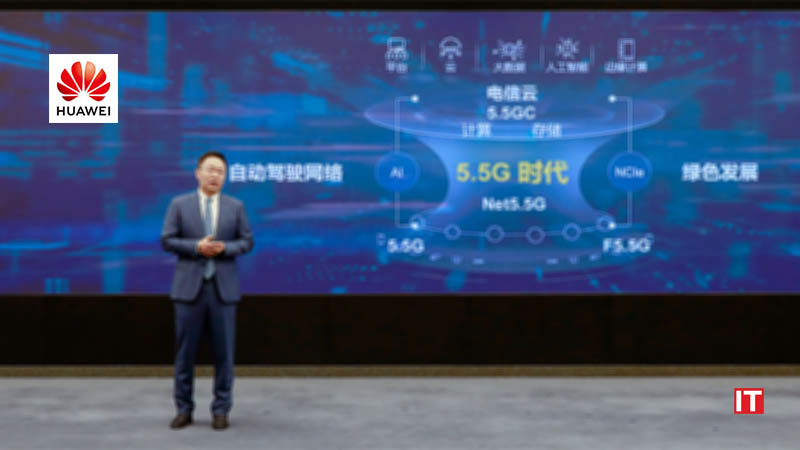At the Win-Win·Huawei Innovation Week, David Wang, Executive Director of the Board and Chairman of the ICT Infrastructure Managing Board of Huawei, delivered a keynote speech titled “Innovation, Lighting up the 5.5G Era”. In his speech, Wang spoke about the next evolution of 5G technology, which the company has termed, 5.5G, and the industry’s innovation roadmap for the next five to ten years.
David Wang, Executive Director of the Board and Chairman of the ICT Infrastructure Managing Board of Huawei, delivering a keynote speech
“Looking ahead to 2025, the sheer diversity and magnitude of network service requirements will create huge new market potential,” said Wang. “We’re here to discuss these opportunities with operators and industry partners, and explore the innovations we need to help pave the way for 5.5G.”
Huawei proposed 5.5G for the first time at the 11th Global Mobile Broadband Forum in 2020, and F5.5G (or fixed 5.5G) at the Global Analyst Summit this April. Since then, the industry has been simmering with new ideas and best practices.
A wealth of new requirements will raise the bar for next-generation ICT infrastructure
According to Wang, new developments in digital technology need to support a truly real-time, engaging, and more immersive experience in the digital world, and gradually make a 10 Gbps network experience available everywhere on the planet.
Also Read: City of Boston Partners with ParkMobile to Launch a New Version of the ParkBoston App
On the industrial front, digitalization has already entered the fast lane. AI will be fully integrated into enterprise production processes, and the size of the 5.5G IoT market will grow rapidly. Collaboration between robots and people in complex scenarios will impose greater requirements on next-generation industrial field networks.
Currently, bottlenecks in computing, such as memory walls, unbalanced utilization of data center resources, and low energy efficiency, are hindering the rise of new computing demand. To address these challenges, the industry needs to innovate at the architecture and system levels to boost computing supply.


































